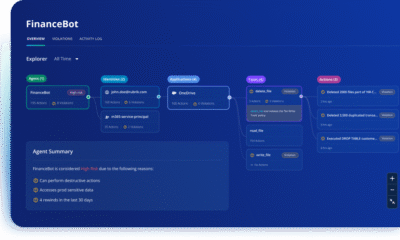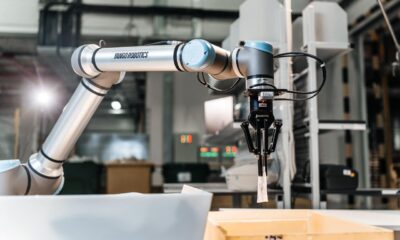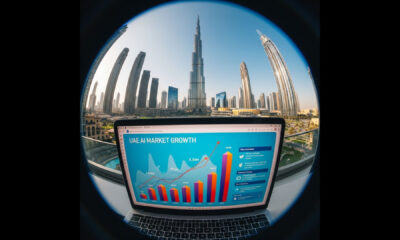Tech Features
UiPath Highlights 2025 AI and Automation Trends Set to Transform Enterprises

2025 will be the year of AI maturity in the enterprise. The evolution of AI has reached a point where increasingly, AI-powered agents will have the capabilities that make them indispensable to knowledge workers. This opens the door for Agentic Automation – a new level of AI support from which employees and companies will be able to benefit reliably for the first time.
UiPath (NYSE: PATH), a leading agentic automation and AI company, sheds light on what to expect in the coming year in its AI and Automation Trends 2025 report. UiPath’s predictions are based on extensive market analysis, current developments in AI research and experience from working with over 10,000 companies worldwide.

Area Vice President And Managing Director
UiPath Middle East and Africa
“AI has long since left the status of a trend behind. 2025 will be the year in which it establishes itself as an indispensable work tool in many industries through agent-based automation,” says Zakaria Haltout, Area Vice President MEA at UiPath. “The latest Astra Tech study reveals that in the MEA region, 65% of organizations are prioritizing AI-driven strategies, particularly in finance, government, and healthcare. As companies focus on addressing scalability and integration challenges, Agentic AI is poised to accelerate digital transformation and redefine operational efficiency.”
Autonomy within orchestration
The trends that lie ahead are undoubtedly linked to the development of technology. It is therefore a good place to start when analyzing the expected direction its use will take.
Trend I. The rapid development of AI agents that autonomously understand, plan and operate within complex workflows.
Prediction: Agent-based AI will allow companies to automate complex processes with minimal supervision, increasing productivity and opening up new opportunities for industry-specific automation solutions.
Preparation: Subject at least one process to agent automation. Passivity stifles innovation, so it is worth joining the pioneers in agentic AI or at least keeping a close eye on their activities.
Trend II. With the development of agent-based artificial intelligence, orchestration is becoming increasingly important.
Prediction: In order to realize the full potential of agentic AI, businesses will need a dynamic infrastructure that enables humans and robots to collaborate with agents. Additionally, it will need to enable their creation, deployment, as well as monitoring of their activities with transparency and compliance.
Preparation: Create a plan for the introduction and scaling of an agentic AI environment, taking into account the need for human oversight and the role of RPA robots as the ‘hands and feet’ of new agents.
New business strategies
Next year’s changes will not only affect the technology behind AI itself, but also the ways in which it can be used in a business context. Organizations will be rethinking how they approach problems such as technology debt or the lack of a concrete strategy when implementing AI.
Trend III. Executives are disillusioned with spending millions on AI without the expected results. Companies that implement AI without clear strategies to measure and demonstrate ROI will struggle to justify the costs.
Predicion: Companies need to develop procedures to track and measure the impact of AI on key business outcomes such as productivity, cost savings and revenue growth. The role of business technology providers will also increase. One of the most widespread uses of AI are ‘copilots’, which help employees with various office tasks. These are being developed by major enterprise technology providers such as Microsoft, GitHub and Google and are yielding excellent results. For example, UiPath has created Autopilot for Developers, which reduces automation development time by 75%.
Preparation: A greater focus on AI ROI measurement tools and strategies, a thorough analysis of the company’s use of the technology and training in the use of embedded tools such as copilots.
Trend IV. Heads of technical departments are turning to AIOps (Artificial Intelligence for IT Operations) tools to streamline operations, automate routine tasks and improve system reliability.
Prediction: As organisations increasingly rely on complex digital infrastructures, many are struggling with technology debt – accumulated inefficient processes and outdated systems that can slow down innovation or increase the cost of operations.
Preparation: Investing in AIOps can prove invaluable for managing technology ecosystems more effectively. This will reduce short- and long-term technology debt, while freeing up resources to drive innovation.
Regulatory landscape
Trend V. Escalating regulation: global lawmakers are working to control the power of AI.
Prediction: The AI Act introduced by the European Union could result in the first fine related to artificial intelligence. The EU is spearheading the introduction of increasingly restrictive regulations on the technology. This could discourage investment in AI within the EU and stifle growth, or alternatively become a model for legislation in the US, UK and Asia-Pacific, which the AI research communities are still waiting for.
Preparation: Implement robust data governance and adequate security measures, prioritise transparency as well as comprehensibility of AI algorithms and establish clear accountability structures for AI-related decisions.
Tech Features
Yango Tech: Four Game-Changing Tools Revolutionising Retail Operations
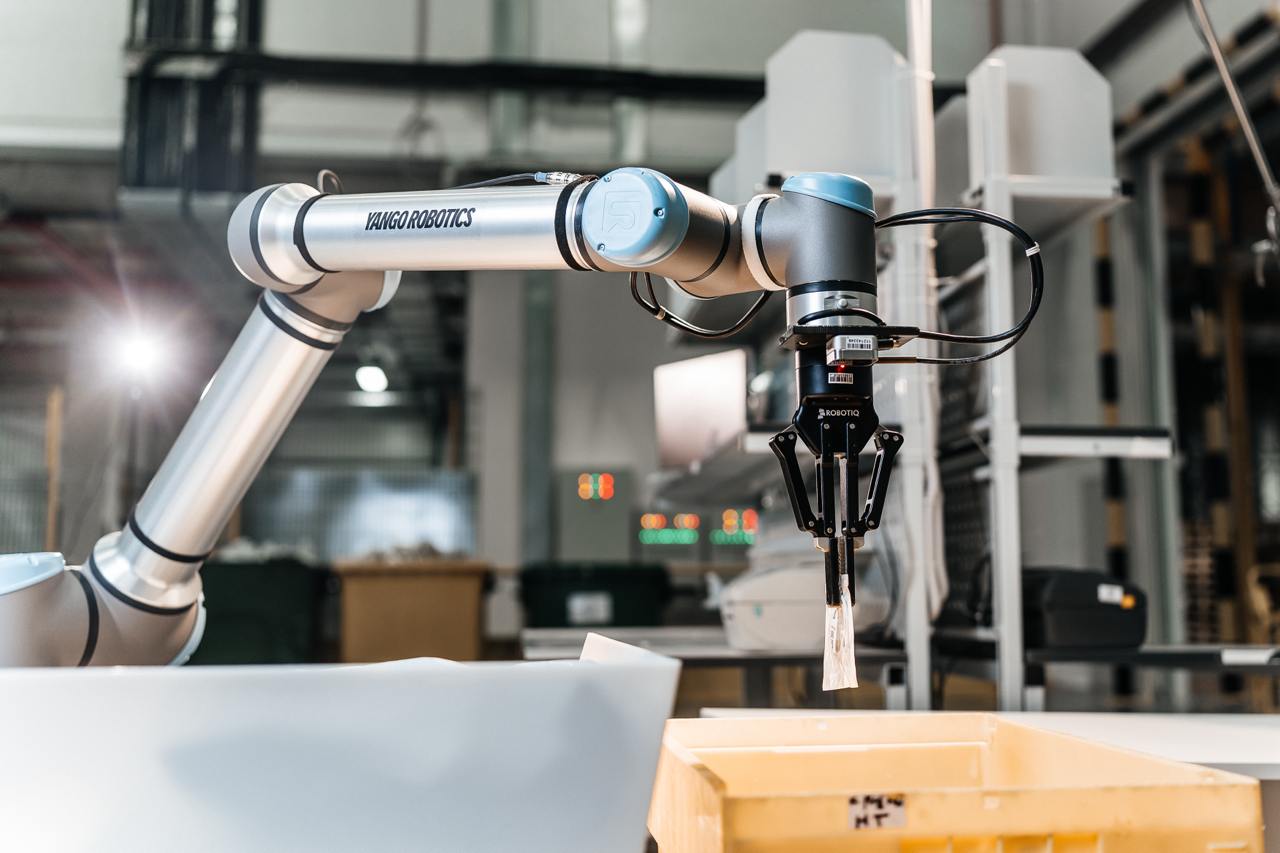
Consumer demand in the Middle East is rising fast, driven by omnichannel shopping habits and the expectation of speed and accuracy. AI-powered automation has become essential for retailers to keep up. McKinsey projects AI contribute up to $150 billion to GCC economies by 2030, while the UAE’s retail sector is forecast to reach $74.87 billion by 2028. Yango Tech has outlined four key tools retailers can use to succeed in this environment.
1. AI Agents
AI agents are transforming retail with several capabilities. On the front end, they deliver contextually relevant recommendations in real time, tailoring offers based on location, cultural moments, or the weather, while conversational AI enriches the journey with human-like assistance in native languages. They also harness predictive capabilities by analysing unstructured data, from social media to past purchase behaviour, to anticipate shifts in demand and refine pricing or promotional strategies. Ahead of Eid Al-Adha, for instance, they might spotlight premium meat cuts or traditional Arabic sweets, helping retailers unlock revenue increases of 10–15%.
Beyond customer-facing roles, AI agents drive efficiency behind the scenes. Procurement agents compose RFPs, compare vendor offers, and execute sourcing decisions directly in procurement systems, saving up to 80% of manual effort. Replenishment agents forecast inventory gaps, adjust orders dynamically, and use computer vision to redistribute stock or reroute deliveries, boosting accuracy to 95% and cutting waste. Content management agents accelerate time-to-listing by auto-generating product cards, adapting content to trends, and ensuring consistency across markets. Pricing agents track competitor SKUs and demand elasticity in real time, optimising promotions and delivery fees to protect margins while sustaining competitiveness.
2. Smart Price Tags
Price intelligence has become crucial for staying competitive with today’s informed and price-sensitive shoppers. Dynamic pricing algorithms can review millions of products in minutes, optimising strategies at a speed human decision-making cannot match. By applying ML to track competitor pricing, market trends, and demand elasticity, retailers can adjust prices in real time, boosting gross merchandise value by up to 20%. These systems also factor in seasonal shifts, fluctuating supply costs, and product shelf life, while surge pricing AI manages delivery fees or order values during peak periods to protect margins. Digital twin technology strengthens this further by creating virtual replicas of stores, streaming data from sensors and cameras into pricing systems. This real-time visibility into shelves and product movement ensures that pricing decisions are tied directly to availability, enabling retailers to reduce waste, streamline operations, and maintain customer trust while driving profitability.
3. Computer Vision
Computer vision (CV) is redefining how retailers manage store layouts and product assortments by moving beyond static, manually updated plans. Instead of relying only on historical sales data, AI agents equipped with CV analyse real-time customer traffic and interactions to continuously optimize shelf arrangements and product placement. This creates store environments that adapt dynamically to shopper behaviour, boosting sales and improving the overall experience. CV also provides granular insights into store-specific conditions, from equipment to layout constraints, enabling smarter decisions. Beyond the shop floor, warehouses use CV to monitor dispatch accuracy, logistics teams track the condition of trucks in transit, and managers can oversee staff performance in real time. Paired with augmented reality, the technology also delivers richer customer engagement, allowing shoppers to virtually try on clothes or visualize furniture directly in their homes.
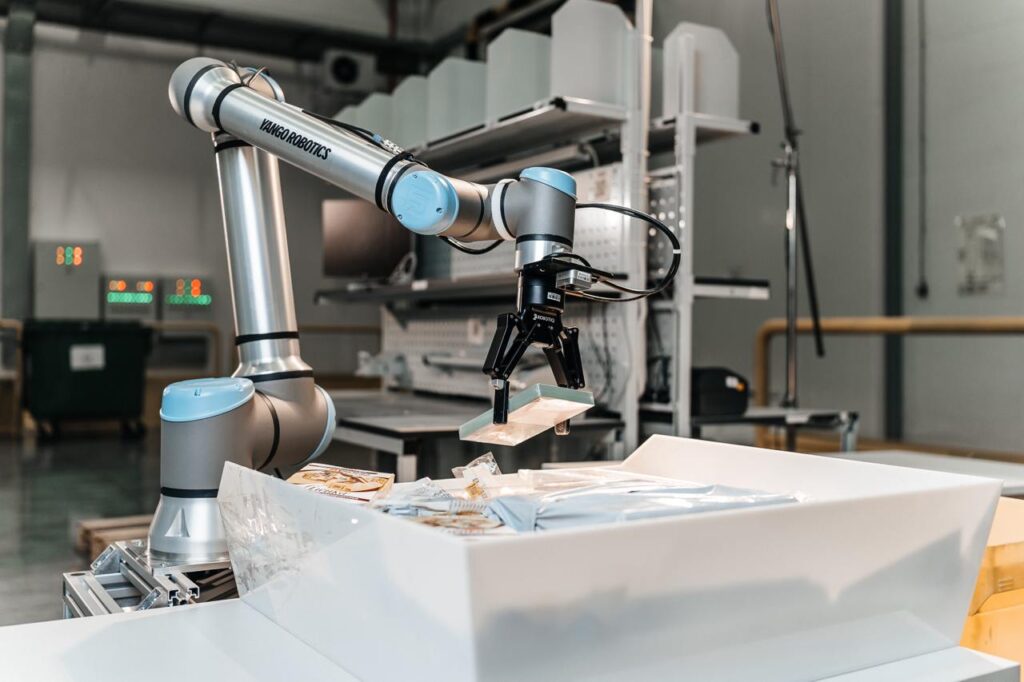
4. Robotic automation
Robotics is moving from concept to necessity in retail. In warehouses, robotic pickers trained through behavioural cloning by human experts and thousands of real-world warehouse scenarios reach up to 95% picking accuracy. With the repetitive warehouse tasks taken over, staff can focus on higher-value work and boost productivity.
Autonomous delivery robots are also emerging as practical solutions for dense urban areas. Equipped with high-precision navigation, they operate 24/7 and cut emissions compared to traditional vehicles. They complement existing fleets by reaching locations where larger vehicles cannot, supporting zero-emission urban logistics. As battery technology and urban infrastructure advance, their role in retail operations will continue to expand.
Tech Features
From Control to Intelligence: Why the GCC Is Poised to Lead the Next Security Evolution

By Wei Huang, Chief Technology Officer, Anomali

In cybersecurity, each era is defined by a shift in architecture. Firewalls dominated the 2000s. Endpoint protection and identity controls shaped the 2010s. Today, we are entering a new phase — one where cloud-native platforms, real-time data correlation, and AI-powered analytics are no longer optional but essential.
Nowhere is this transition more timely than in the Gulf Cooperation Council (GCC) region. As cloud adoption accelerates across the United Arab Emirates (UAE), Saudi Arabia, and neighboring states, national cybersecurity resilience has become a critical pillar of digital transformation. GCC organizations have a unique opportunity to leap ahead — bypassing legacy limitations and adopting next-generation security architectures purpose-built for today’s advanced threats.
The Core Shift: Security Is Now a Data Problem
For decades, cybersecurity focused on control: firewalls, proxies, endpoint agents, and network gateways. While these tools remain foundational, today’s adversaries have evolved. Attackers exploit gaps between systems, bypass controls through misconfigurations, and evade siloed defenses with increasing sophistication.
The result is a fundamental architectural shift: modern security is no longer solely about enforcing control — it’s about processing data. Effective defense requires ingesting, normalizing, and correlating telemetry across every layer of the enterprise: endpoints, cloud workloads, SaaS platforms, identity systems, and external intelligence feeds. When combined with AI-powered analytics, this data-driven approach transforms raw telemetry into actionable insights, allowing defenders to outpace attackers, rather than merely react, once an attack has been detected.
Cloud-Native Design: The Architecture That Scales
Traditional security information and event management (SIEM) systems and on-premises platforms struggle to meet the scale, flexibility, and speed required in modern hybrid environments. Cloud-native architectures, by contrast, offer elastic scalability that aligns directly with national digital transformation priorities across the GCC.
However, the scale of telemetry introduces new challenges. Global cloud storage volumes are projected to reach 100 zettabytes by the end of 2025. Storing and processing such massive datasets can quickly become prohibitively expensive — unless managed with modern design principles.
The solution lies in the security data lake: a unified, long-term, cloud-native repository capable of retaining years of structured and unstructured security data. Unlike legacy systems limited to weeks or months of visibility, a security data lake enables continuous historical analysis for threat hunting, compliance, and investigations.
Crucially, modern architectures decouple storage and compute. Instead of permanently allocating compute resources (as most legacy platforms do), serverless designs apply compute power only when needed, dramatically reducing cost while enabling faster analysis.
For example, by leveraging serverless infrastructure on Amazon Web Services (AWS), Anomali enables compute bursts across thousands of nodes, delivering correlations and searches up to 1,000 times faster, at a fraction of the cost of traditional solutions. This approach is particularly aligned to national resilience goals, where speed and efficiency are essential.
Real-Time Correlation at Petabyte Scale
Today’s attackers automate their reconnaissance, probing continuously for vulnerabilities across every layer of the enterprise. To keep pace, organizations must reduce detection time and response costs, which demands real-time correlation across petabytes of data.
By integrating telemetry from multiple domains — including firewalls, endpoints, SaaS platforms, identity providers, and threat intelligence — organizations gain visibility into attacks that no single control would detect alone. For GCC enterprises expanding hybrid and multi-cloud infrastructures, the ability to correlate across these diverse sources in real time is mission-critical.
AI Delivers Context, Not Just Alerts
Artificial intelligence is now widely marketed in cybersecurity, but much of it offers opaque conclusions without transparency — effectively adding noise rather than clarity.
True AI-powered defense must provide explainability. Anomali applies chain-of-thought (CoT) AI reasoning, ensuring every detection includes the rationale, evidence, and audit trail behind each decision. This transparency builds analyst confidence and accelerates skill development, particularly valuable as GCC nations continue building local cybersecurity talent and operational maturity.
Intelligence Closes the Gaps Left by Controls
Even with modern defenses in place, critical gaps remain. Studies show that many endpoint detection and response (EDR) solutions still miss up to 30% of advanced threats, thanks to sophisticated evasion techniques, configuration gaps, or partial visibility. Firewalls suffer similar challenges: misconfigurations and limited context allow adversaries to slip past perimeter defenses.
This is where intelligence plays a decisive role. By unifying diverse telemetry and correlating billions of daily security events, modern security analytics platforms fill these blind spots, delivering full-spectrum detection across hybrid environments. For critical infrastructure, financial institutions, and government entities in the GCC, closing these gaps is no longer optional — it is a resilience imperative.
Agentless, Serverless, Effortless
Managing thousands of endpoint agents introduces complexity, operational risk, and resource overhead. Cloud-native platforms eliminate much of this friction by integrating directly with cloud platforms, SaaS services, and enterprise infrastructure via secure APIs, allowing telemetry ingestion without deploying additional agents.
For organizations balancing hybrid complexity with cloud-first strategies, agentless deployment models dramatically simplify operations — enabling faster rollout, lower risk, and greater agility.
Why the GCC Is Uniquely Positioned to Lead
The UAE, Saudi Arabia, and neighboring GCC nations are investing heavily in smart cities, digital economies, and next-generation public services. These national ambitions require security platforms that are scalable, adaptive, intelligent, and capable of evolving alongside rapid technological change.
Cloud-native, AI-powered, intelligence-driven security operations are no longer a distant vision but an operational necessity. By embracing these architectures, GCC enterprises and governments are positioned not only to meet today’s security demands, but to set a global standard for the future of cyber defense.
The time to shift from fragmented controls to unified intelligence is now. The future of security isn’t about deploying more tools — it’s about building smarter platforms.
And the GCC is ready.
Wei Huang is the Chief Technology Officer at Anomali, a global leader in intelligence-driven cybersecurity solutions.
Tech Features
Shure’s Growth Story in the Middle East and Beyond
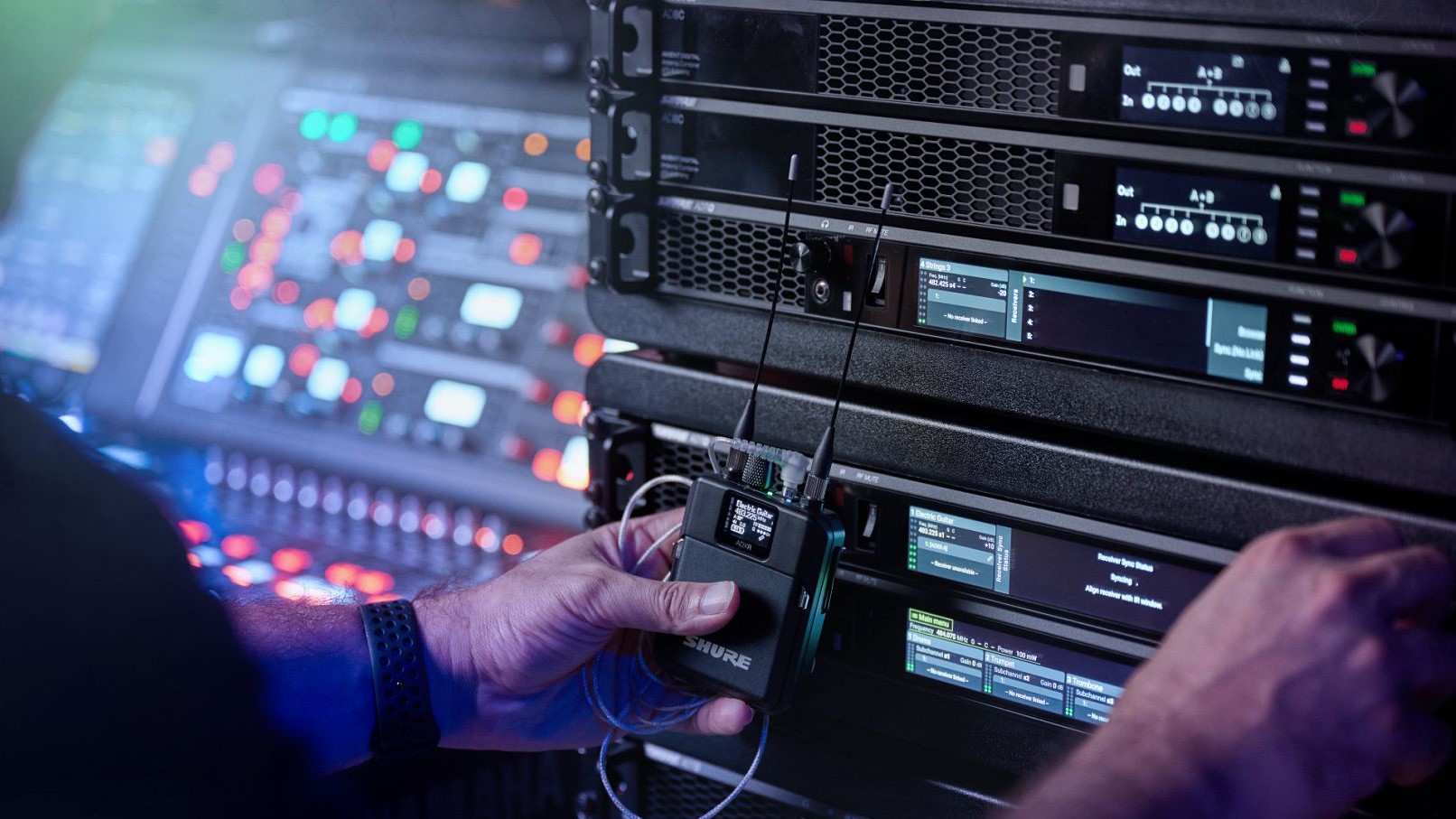
As the region accelerates its digital and cultural transformation, professional audio will only grow in importance.
By Yassine Mannai, Associate Director Sales, Shure MEA

The Middle East and Africa (MEA) region is witnessing an extraordinary moment of profound transformation as nations continue to reimagine their respective economies. Cities across this vibrant region are increasingly positioning themselves as global hubs, anchored on rapid technological shifts. From national diversification agendas such as Saudi Arabia’s Vision 2030 to the UAE’s expanding cultural economy and Africa’s urbanization, the region is rethinking how it communicates, collaborates, and entertains. Against this backdrop, professional audio integration has emerged as the key enabler. Pro audio is no longer viewed as luxury; it has become a strategic pillar of productivity, culture, and trust.
For Shure, this represents fertile ground for growth. The company’s trajectory in the region is anchored on a clear multi-prong approach: sustainable value creation through localization, strong partnerships, and continuous education. Rather than chasing short-term wins, the focus is on building strong ecosystems where audio technology empowers organizations to achieve their ambitions.
A Partner in Regional Growth
Demand for professional audio is being fueled by three key drivers. First, the large-scale investments in infrastructure and cultural projects trend in the region is creating an appetite for reliable, scalable audio solutions. Second, with hybrid work and learning still active, audio systems now serve as must-have tools for collaboration, ensuring clarity and engagement. Third, the entertainment and events industry continues to flourish, with audiences expecting immersive sound experiences with emotional connection.
Shure’s presence in conferences, cultural centers, and classrooms underscores its adaptability. By aligning closely with each sector’s needs, the company is not just supplying equipment – it is shaping how people experience communication and culture. Providing the ultimate IT and meeting room solutions is one thing, ensuring that end-user requirements in meeting spaces are consistently met is where the rubber meets the road, which makes factors such as quality, form factor, and smart solutions that leverage technology for seamless integration crucial.
A Strategy Anchored on Three Pillars
Shure’s growth blueprint rests on localization, partnerships, and education.
- Localization ensures that global standards are adapted to regional requirements. A broadcaster in Abu Dhabi may demand wireless mobility, while a university in Riyadh seeks scalable, user-friendly systems. Meeting these nuanced needs requires agility and customization.
- Partnerships with distributors, integrators, and resellers expand reach and sustain service excellence. These trusted relationships are critical to delivering value on the ground.
- Education equips professionals with the right skills to maximize technology investments. Through training initiatives, Shure empowers AV specialists to deploy and maintain systems effectively, ensuring customers achieve long-term returns.
Technology and Innovation at the Forefront
We strongly believe that the future of audio in the region will be shaped by three defining trends.
- Immersive experiences are becoming a cultural norm, and audio must now create impact as much as it delivers clarity.
- AI and intelligent systems are moving from concept to reality making adaptive audio that responds to its environment the way to go.
- Hybrid environments will remain central to work and education even as physical and virtual interactions merge with audio determining whether collaboration succeeds or fails.
A century of sound, a future of possibility
This year, Shure marks its 100-year anniversary. Few technology brands reach such a milestone, and fewer still do so with their reputation for quality and trust intact. For customers and partners in MEA and beyond, the centennial is not merely a celebration of heritage. It is a reassurance that Shure’s next century will be guided by the same principles that made it a global leader – with innovation, reliability, and customer focus at the core.
As the region accelerates its digital and cultural transformation, professional audio will only grow in importance. For IT leaders, this means viewing sound not as an afterthought, but as a strategic layer of infrastructure – one that underscores effective communication, collaboration, and connection.
Shure’s growth story is far from complete. The company’s next chapter is being written in partnership with the region’s institutions and enterprises. And in an age where voices need to be heard clearly across physical and digital spaces, Shure’s mission remains simple: to deliver sound that empowers progress.
-

 Tech News1 year ago
Tech News1 year agoDenodo Bolsters Executive Team by Hiring Christophe Culine as its Chief Revenue Officer
-

 VAR7 months ago
VAR7 months agoMicrosoft Launches New Surface Copilot+ PCs for Business
-

 Tech Interviews2 years ago
Tech Interviews2 years agoNavigating the Cybersecurity Landscape in Hybrid Work Environments
-

 Tech News3 months ago
Tech News3 months agoNothing Launches flagship Nothing Phone (3) and Headphone (1) in theme with the Iconic Museum of the Future in Dubai
-

 Tech News2 years ago
Tech News2 years agoBrighton College Abu Dhabi and Brighton College Al Ain Donate 954 IT Devices in Support of ‘Donate Your Own Device’ Campaign
-

 Editorial11 months ago
Editorial11 months agoCelebrating UAE National Day: A Legacy of Leadership and Technological Innovation
-

 VAR1 year ago
VAR1 year agoSamsung Galaxy Z Fold6 vs Google Pixel 9 Pro Fold: Clash Of The Folding Phenoms
-

 Cover Story8 months ago
Cover Story8 months agoUnifonic Leading the Future of AI-Driven Customer Engagement






